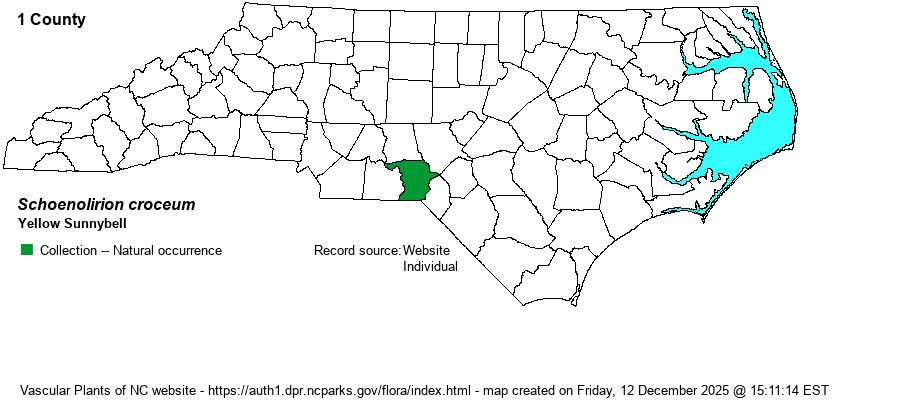| Author | (Michaux) A. Wood | |
| Distribution | Weakley (2018) states: "The occurrence in NC in 'wet pinelands' in Richmond County referred to in RAB [1968] has not been relocated or further documented." Despite this statement, there is a verified specimen from "damp pine barrens, Hamlet", no date, C.S. Williamson s.n. (PH). Williamson collected Amorpha georgiana in Hamlet on 20 May 1895, a date compatible with flowering of Sunnybell. This specimen, however, has not been seen or examined by any recent NC botanists for verification of identification or location.
Southwestern SC to north-central GA and northeastern FL; central AL to central TN; southwestern LA - eastern TX. Disjunct to south-central NC. | |
| Abundance | No data on the specimen. Long, long historical -- if it truly ever occurred in NC. But as the species perhaps still occurs in SC, it is best not to consider it as Extirpated (SX). It is a Watch List species; the NC NHP has recently (2022) moved the State Rank to SU (Undetermined), though both SR (Reported but not fully documented) or SH (Historical) could also be used! | |
| Habitat | Yellow Sunnybell inhabits two major habitat types: granitic flatrocks in seasonally wet pools, rivulets, and moss patches; and Longleaf Pine savannas. It also occurs in calcareous glades in northern AL - central TN. | |
| Phenology | Over most of its range it blooms in April and May, and fruits in May and June. | |
| Identification | This lily is unmistakable when flowering, with its raceme of bright yellow, 6-parted flowers and slender, grass-like leaves. | |
| Taxonomic Comments | None
| |
| Other Common Name(s) | Sunnybells | |
| State Rank | SU | |
| Global Rank | G4 | |
| State Status | W3 | |
| US Status | | |
| USACE-agcp | OBL link |
| USACE-emp | OBL link |

